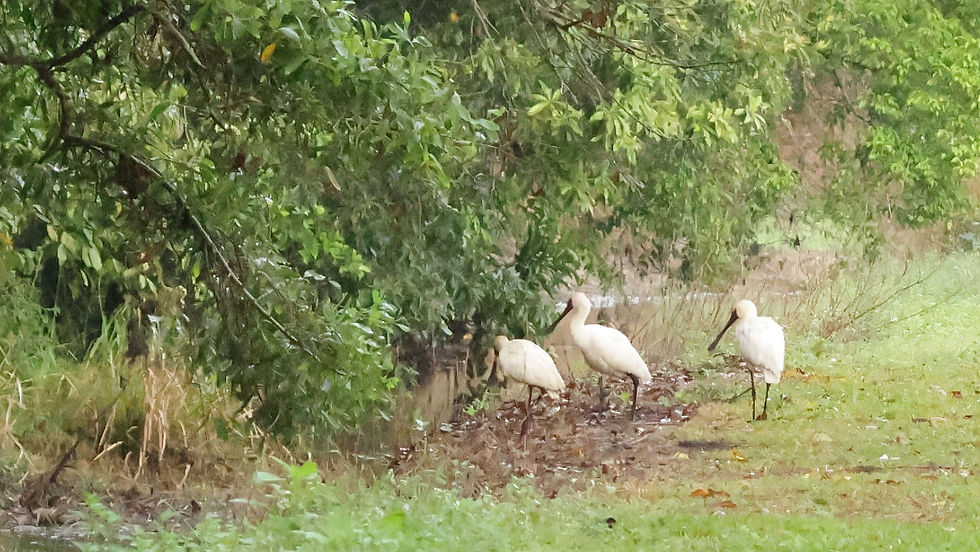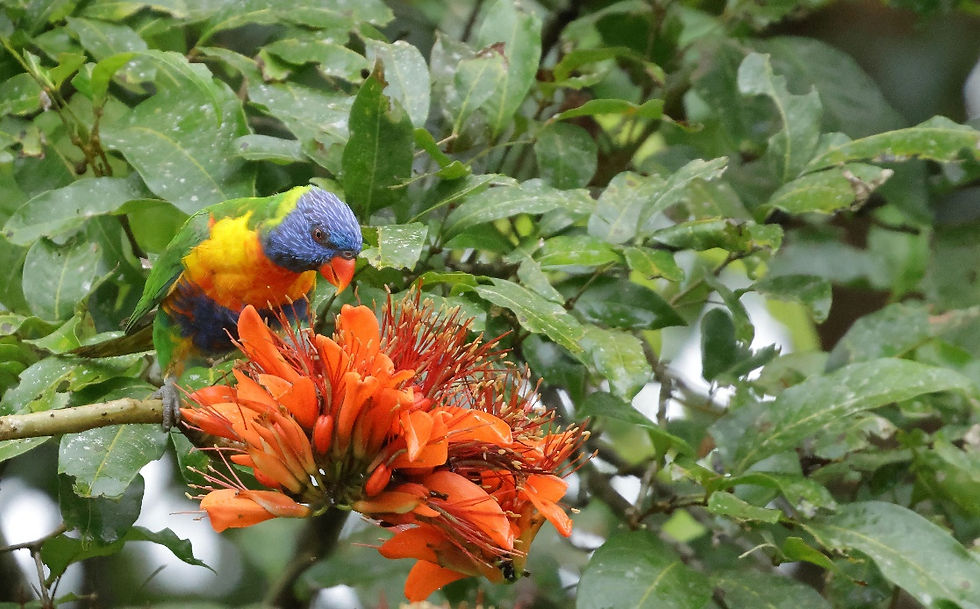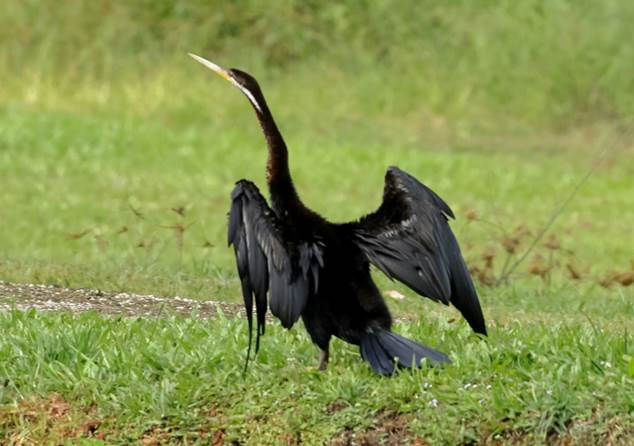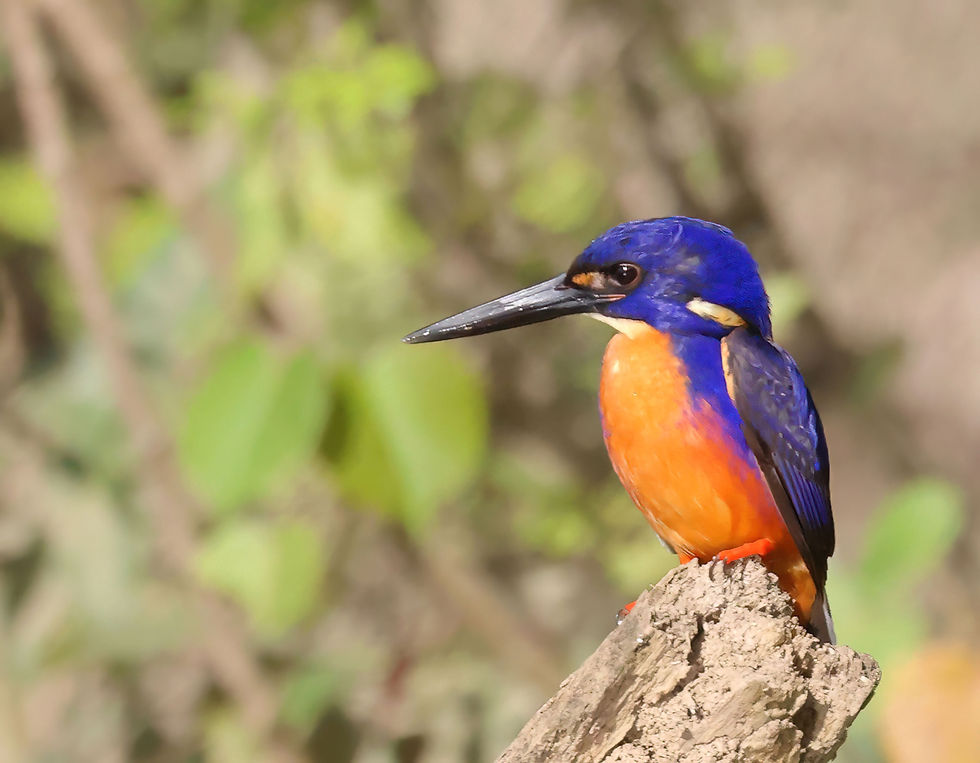Warrina Lakes parkland, Innisfail, birding outing: September 2025
- Guest Contributor

- Sep 17, 2025
- 3 min read
Updated: Sep 19, 2025
Geoff Stapley | Guest Contributor
If you like your birdwatching mixed with a dash of trivia, Warrina Lakes never disappoints.
Australia is home to roughly 760–770 bird species on the mainland, rising to about 900 once offshore islands and territories are included. By comparison, Warrina Lakes Conservation Area (just 15 ha in size) has already recorded 75 species for the year to date – around 10% of Australia’s total. If we consider the full list of species ever recorded at the site, that figure climbs to about 15%.
To put it in perspective: Australia spans 7.668 million km² or 766.8 million hectares. One square kilometre equals 100 hectares, and you could fit Warrina Lakes into one square kilometre roughly 6.5 times.
In other words, the area of Warrina Lakes equals a mere 0.0000019% of Australia’s landmass – yet it hosts an astonishing slice of our national birdlife: truly a case of “punching above its weight” in the birds-per-hectare stakes!
A morning that began with grey skies
Sunday, 14 September 2025 dawned overcast with an unpromising forecast, but a smile from the ‘weather gods’ meant no rain and plenty of bird activity. Even in the carpark, participants on the walk were surrounded by birds in a fruiting fig tree, and along the south drain drainage channel. These included: orioles, figbirds, Bush Stone-curlews, Masked Lapwings, Torresian Imperial-Pigeons overhead, Magpie-Larks, Peaceful Doves, plus Common Mynas and Feral Pigeons. A Barred Cuckoo-Shrike was first heard then seen later during the walk (see photo below).
Along the drain three Royal Spoonbills and a Great Egret kept us on our toes, while a Great-billed Heron glided through. The resident domestic geese had relocated to the main lake.

Wet-area banquet
Crossing the north drainage channel revealed Pacific Black Ducks feeding in the puddles left by the previous day’s rain. Nearby a pair of Radjah Shelducks delighted everyone – one bird in particular was enjoying a very energetic ‘spa bath’, splashing, diving and sending water flying.

With so much surface water, worms and grubs were clearly close to the surface and the Australian White Ibis were taking full advantage.
Overhead, Rainbow Lorikeets and Helmeted Friarbirds feasted in the blossoms alongside a few Brown-backed Honeyeaters.

Keen eyes also picked up a Leaden Flycatcher above, while our turning point in the track produced a Barred Cuckoo-Shrike sharing dead branches with Australian Figbirds and Green (aka Yellow) Orioles.

On the way back, the Radjah Shelducks alighted on a nearby branch, one displaying magnificent colours. Brown-backed Honeyeaters remained busy as ever.

Lakeside highlights
Approaching the bridge we spotted Double-eyed Fig-Parrot high above, and at the bridge itself a flash of electric blue announced an Azure Kingfisher. It’s always a joy to get great views of this stunning bird!
The main lake added more variety: Wandering Whistling Ducks, Pacific Black Ducks, a lone Comb-crested Jacana, an Australasian Darter drying its wings, and, far off on the fence, a pair of Forest Kingfishers.


A big morning for a small site
As we looped back, we again encountered figbirds, orioles, Brown-backed Honeyeaters and Willie Wagtails. In total, 46 species and 248 individual birds were seen or heard (with a few more probably missed), nudging our year-to-date tally to 75 species.
Thus, despite a few stray drops of rain, it was another rewarding morning at Warrina Lakes – a reminder that even the smallest pockets of habitat can host an extraordinary wealth of birdlife.
Birds identified in order of recording
Australasian Darter | Masked Lapwing | Sulphur-crested Cockatoo |
Orange-footed Scrubfowl | Comb-crested Jacana | Azure Kingfisher |
Peaceful Dove | Bush Stone-curlew | Forest Kingfisher |
Bar-shouldered Dove | Australian White Ibis | Australian Swiftlet |
Little Black Cormorant | Royal Spoonbill | Little Bronze-Cuckoo |
Great-billed Heron | Plumed Egret | Welcome Swallow |
Great Egret | Wandering Whistling-Duck | Willie Wagtail |
Pacific Black Duck | Radjah Shelduck | Leaden Flycatcher |
Black Kite | Rainbow Lorikeet | Shining Flycatcher |
Double-eyed Fig-Parrot | Magpie-lark | White-bellied Cuckoo-shrike |
Australasian Figbird | Barred Cuckoo-shrike | Varied Triller |
Large-billed Gerygone | Mistletoebird | Olive-backed Sunbird |
Brown-backed Honeyeater | Yellow Honeyeater | Helmeted Friarbird |
Crimson Finch | Green (aka Yellow) Oriole | Metallic Starling |
Black Butcherbird | Rock-Dove (Feral Pigeon) | Common Myna |
Torresian Imperial-Pigeon |




